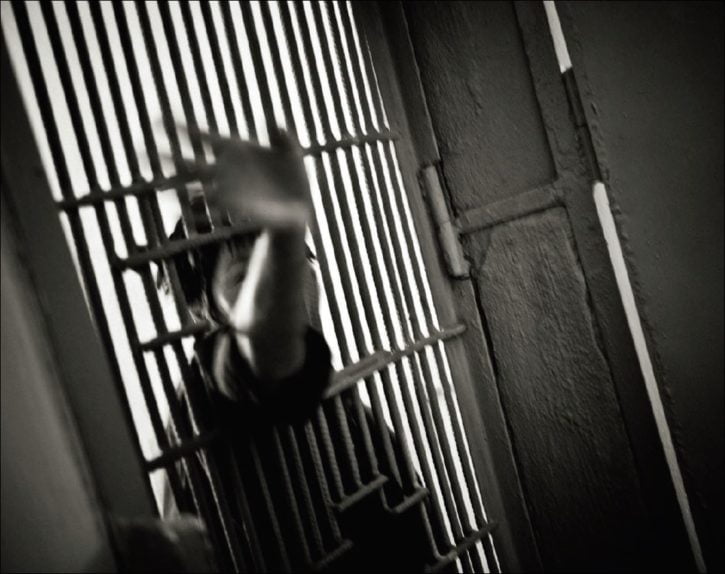Women who kill in response to domestic violence
A new report by Linklaters LLP for Penal Reform International examines how the criminal justice systems in nine different countries respond to women who kill in response to domestic violence.
The nine countries are: Australia, Brazil, Hong Kong, India, Japan, Mexico, Poland, Spain and the United States.
Background
Where women are imprisoned for violent offences, there is often a background of domestic and/or sexual abuse, which, in many cases, motivates the crime.
Two psychological phenomena have been recognised in the context of violence against women:
- “battered woman syndrome”, describing the psychological mind‑set and emotional state of female victims of abuse (developed by Dr. Lenore E. Walker), which explains why women often stay in abusive relationships; and
- the “slow burn reaction”, where women in a situation of abuse tend to not react instantly to the abuse, partly for psychological reasons but also because of the physical mismatch between the abuser and the victim, which makes an imminent response seem futile or even more dangerous to the victim.
In 2012, two thirds of the victims of intimate partner/family-related homicide were female, and almost half of all female victims (47%) of homicide were killed by their intimate partner or a family member(s), compared to less than 6% of male homicide victims.
Overview of findings
Linklaters’ research suggests there is a global awareness of the issues of battered woman syndrome and the slow burn reaction, legislative and judicial attitudes towards and the treatment of female offenders who commit violent crimes against their abusers vary widely.
In the majority of the jurisdictions reviewed, there is no specific legislative basis for a history of abuse to be considered as a mitigating factor and therefore requests for more lenient treatment have been brought within the existing framework of the criminal law.
Typically, offenders have sought to couch their pleas for more lenient treatment in terms of existing defences. Attempts by victims of abuse to rely on self‑defence, temporary insanity and provocation (where available), have been met with varying degrees of success in different jurisdictions.
While some legal systems have been willing to adapt the existing law or even create new law to deal with victims of abuse, other systems appear reticent to expand beyond the traditionally established parameters. Those legal systems that have adapted have been sympathetic to the view that a violent reaction may be the result of a prolonged period of abuse, rather than one single triggering event.
In practice, in all jurisdictions considered, defendants can present evidence of a history of abuse. However, only some jurisdictions’ laws explicitly confer a right to bring such evidence, and the extent to which it is taken into account as a mitigating factor differs dramatically across the jurisdictions.
In some jurisdictions, significant precedent and case law has developed, showing that a history of abuse can be grounds for reducing the gravity
of culpability and/or sentence of a female offender. For example, in US courts, defendants are able to refer to expert testimony to help juries to understand the behavioural pattern of abused women and how that abuse may affect the defendant’s actions and conduct; in the Australian state of Queensland, a specific partial defence to a charge of murder has been introduced of “killing for preservation in the context of an abusive relationship”.

Relevance of abuse in establishing culpability
In almost all of the jurisdictions considered, a history of abuse is not a defence in its own right. As such, defendants generally use a history of abuse to establish one or more limbs of an existing defence (for example a history of abuse may lead a court and/or jury to conclude that the defendant’s actions were reasonable when acting in self‑defence).
Practice has developed in a number of jurisdictions whereby courts have recognised that defences such as self‑defence or provocation should be available to female offenders with a history of abuse. Some countries/jurisdictions are more likely to recognise self defence, others provocation.
Relevance of abuse in sentencing
Sentencing procedure varies between countries, but in general, criminal courts have considerable flexibility in sentencing, irrespective of whether formal sentencing guidelines exist.
Where formal sentencing guidelines do exist, there are no examples of sentencing guidelines that specifically refer to a past history of abuse as a factor to be considered in sentencing.
However, the guidelines can be applied very broadly, meaning that a history of abuse can be (and, in some cases, has been) taken into consideration under more general principles set out in each of the various sentencing guidelines including such factors as:
- General mitigation
- Family relationships with the victim of the offence
- The ability to depart from mandatory minimum sentences when the defendant is a member of the same family or household as the victim.
- The repeal of the mandatory life term for murder allowing non‑custodial sentences to be imposed for manslaughter committed by victims of abuse.
- The physical or mental condition of the offender.
- The degree to which the offence was the result of provocation, duress or entrapment.
Conclusion
This review of the way different countries treat women who have killed their abusers shows that many legal systems are recognising and adapting to a general acknowledgement of the prevalence of domestic abuse but that none have yet sought to pass specific legislation to respond to this situation.






One Response
Men who suffer DV are almost entirely absent from mainstream narratives on DV, as the report you cite demonstrates, despite said report implicitly acknowledging that one third of the victims of intimate partner/family-related homicide were male, the corollary of “two thirds of the victims of intimate partner/family-related homicide were female”.
Some of us believe that the pendulum has swung too far in favour of the feminist perspective on DV. Australia being the most extreme example,
as evinced by the attitudes of family courts towards divorced fathers.
Here is a female advocate for men’s rights.
http://www.avoiceformen.com/a-voice-for-men/jasmin-newman-why-im-an-mra/
My point is: what about the ⅓?